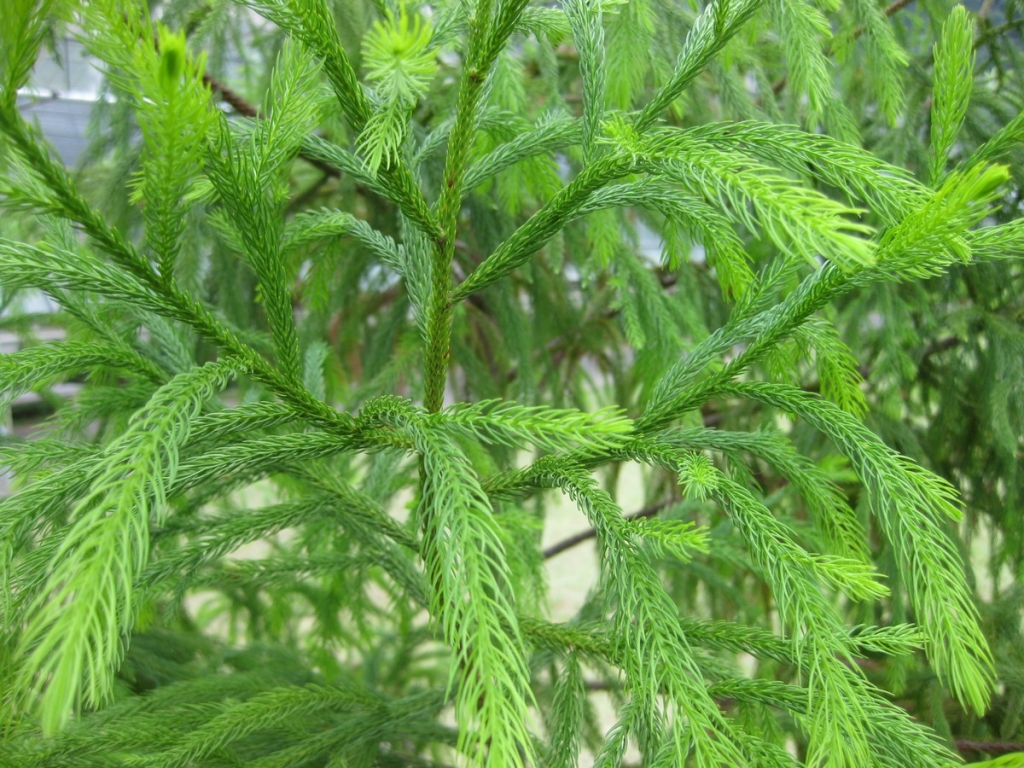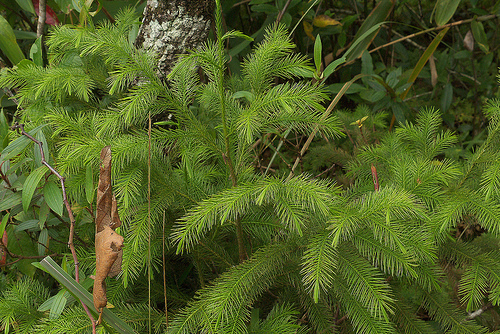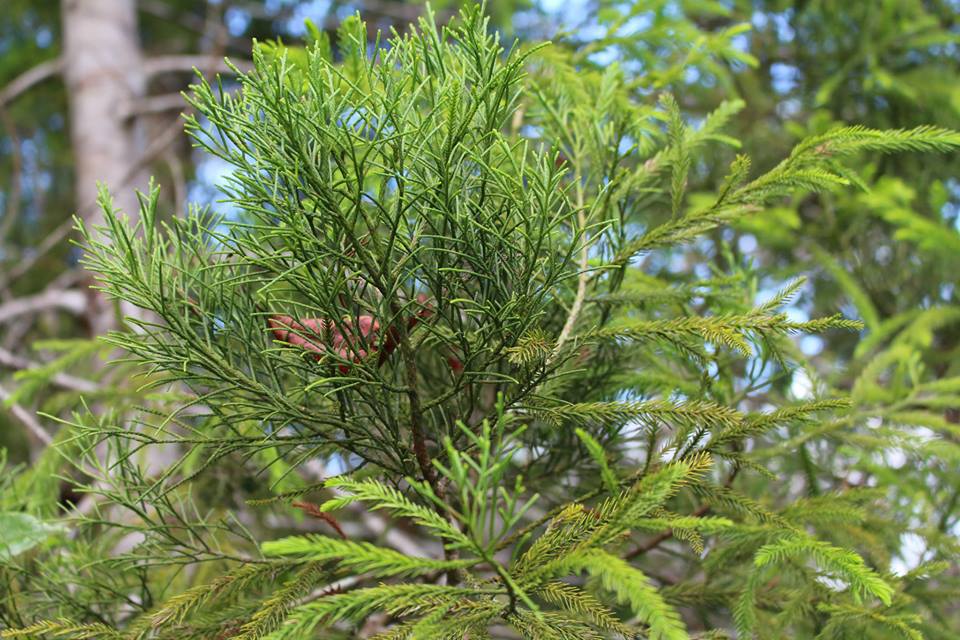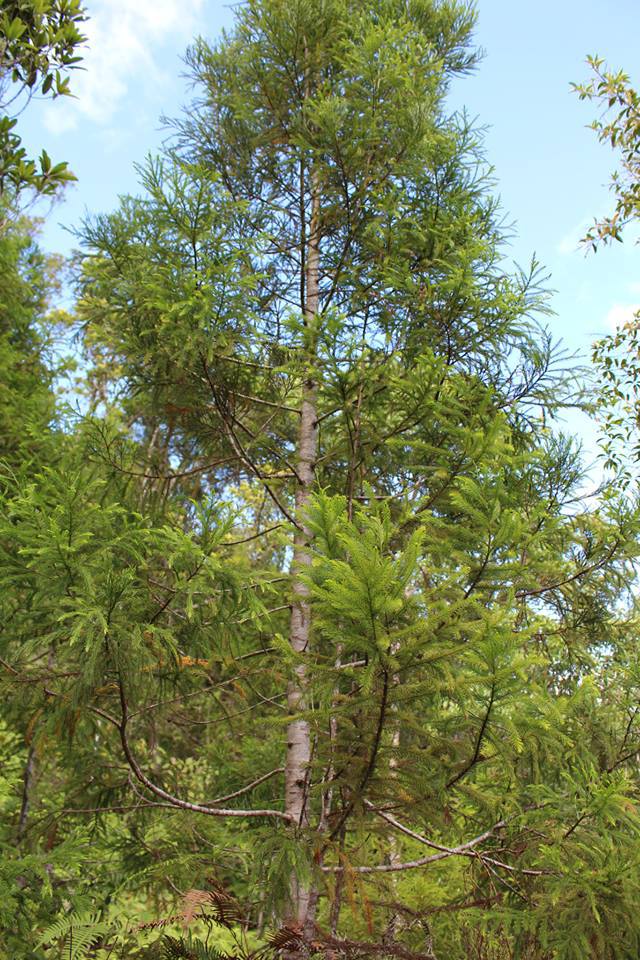Dacrydium elatum was first described by (Roxb.) Wall. ex Hook. in 1843. Common names include in the Vietnamese language: Hoà ng dà n giå ; in Borneo: ouk, Kayan, and sempilor.
Description. Dacrydium elatum is an evergreen coniferous tree in the Podocarpaceae family, growing 25 to 120 feet (8 -40 m) tall with brown bark and many slender, more or less erect branches and crowds of branchlets forming tufts which together comprise a dome-shaped crown. Juvenile leaves linear-lanceolate, spreading but curved forward parallel to the branch, keeled on four sides, growing to at least one-half inch (14 mm) long, gradually becoming shorter and slightly broader with the leaves at the bases of ultimate shoots and on more vigorous shoots noticeably smaller and less spreading. Transitional forms which are sometimes fertile have spreading leaves slightly bent forward towards the acute tip, triangular in cross section, 0.1 inch (2-4 mm) long, the leaves on vigorous shoots are more nearly scale-like. Adult foliage shoots cord-like, and are sharply keeled on their exposed surface. Juvenile shoots sometimes mix with adult shoots thus giving a false impression that leaves change abruptly as the tree matures. The fertile structures occur on the terminal branches. Pollen cones are small, 0.15 to 0.3 inch (4-8 mm) long. The seed-bearing structure, even when produced on needle-bearing branches, is subtended by a scaly peduncle several milimeters long with scales about 0.04 inch (1 mm) long. The seed cones are solitary or arranged in small groups, consisting of about a dozen slightly elongated bracts 1.5-2 mm long. The seed is solitary within the bracts.
Distribution. This species is native to Vietnam, Laos, Cambodia, Thailand, Malaysia where it is very common; in
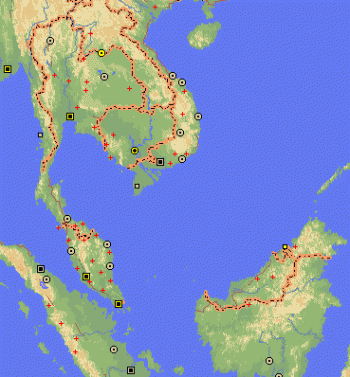
Sumatra where it is only local in west coast resorts, and the Batak Lands; in Borneo, in Sarawak and Sabah, where it is rather rare. Within its range, mean annual temperature is 70º F (21.2° C), with an average minimum in the coldest month of 55º F (12.7° C), and a mean annual precipitation of 82 inches (2,095 mm).
